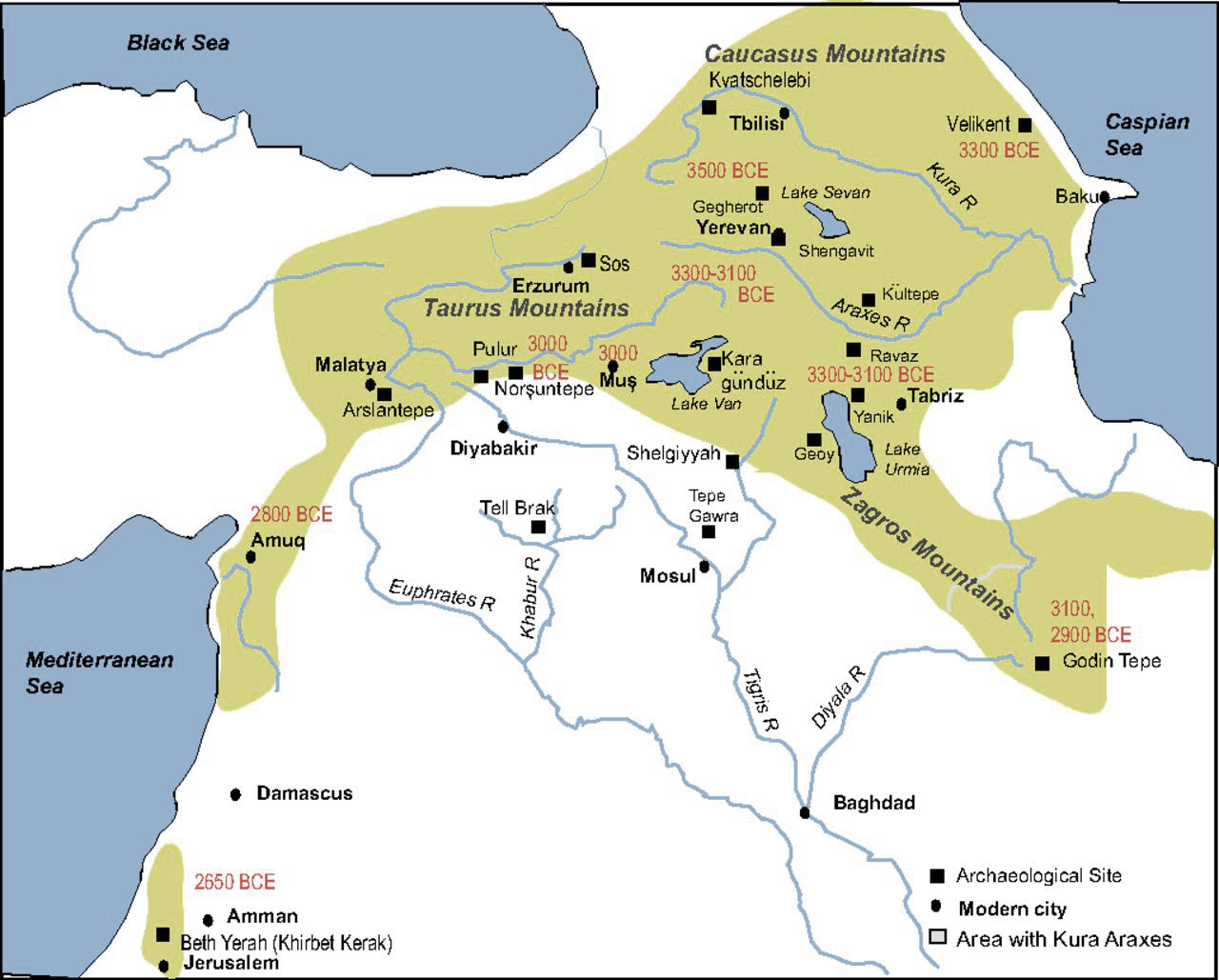It looks like you're using an Ad Blocker.
Please white-list or disable AboveTopSecret.com in your ad-blocking tool.
Thank you.
Some features of ATS will be disabled while you continue to use an ad-blocker.
share:
a reply to: Ridhya
They can be found in Sweden in several places as examples of early bronze age Scandinavian culture, i've no idea why you would suggest petroglyphs involving longships and warriors with axes in that part of the world would need to be Celtic, and i'm not saying those Northern Europeans had any contact with Egypt, only that they had common ancestry and culture with those who i have proposed from the Trans-Caucasus at an earlier date.
They can be found in Sweden in several places as examples of early bronze age Scandinavian culture, i've no idea why you would suggest petroglyphs involving longships and warriors with axes in that part of the world would need to be Celtic, and i'm not saying those Northern Europeans had any contact with Egypt, only that they had common ancestry and culture with those who i have proposed from the Trans-Caucasus at an earlier date.
a reply to: Kantzveldt
Their shields are celtic, their sword style, their axe style. Its not up for debate, go to the National Museum in Copenhagen, they say so. The materials were not native Scandinavian but made in central europe. They're foreign.
Their shields are celtic, their sword style, their axe style. Its not up for debate, go to the National Museum in Copenhagen, they say so. The materials were not native Scandinavian but made in central europe. They're foreign.
a reply to: Ridhya
If they're Danish they would be Ingavoenic, North West Germanic, such ships were common to all of Scandinavia and Denmark by the Iron Age, the predominant culture in Sweden itself was North Germanic so for the earlier bronze age introduction of longship culture into the greater region that would have to have been in terms of assimilation into greater Germanic culture, which like the Celts had developed in Central Europe, there was little difference between Celtic and Germanic shields and weapons.
If they're Danish they would be Ingavoenic, North West Germanic, such ships were common to all of Scandinavia and Denmark by the Iron Age, the predominant culture in Sweden itself was North Germanic so for the earlier bronze age introduction of longship culture into the greater region that would have to have been in terms of assimilation into greater Germanic culture, which like the Celts had developed in Central Europe, there was little difference between Celtic and Germanic shields and weapons.
edit on Kpm13127vAmerica/ChicagoSaturday2831 by Kantzveldt because: (no reason given)
a reply to: Kantzveldt
Kantz, you're one of the smartest people i've met, and you can run circles around me on Sumeria, but not on Scandinavia. You're wrong here and I like you so I'll actually put in the effort.
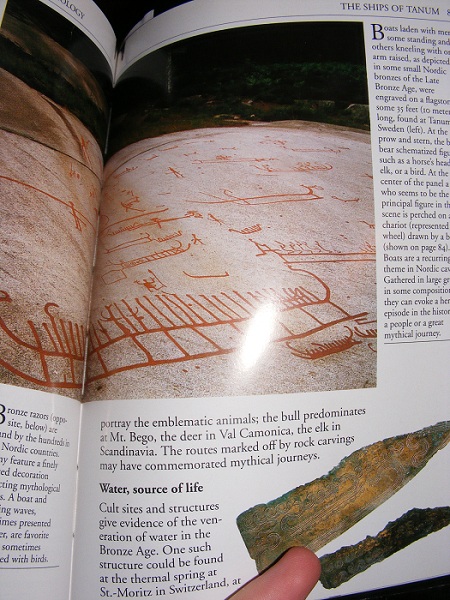
The Tanum images depict warfare and cult scenes, with this type of boat and warriors. EXACT same boat as at Hjortspring, same warriors.

You are wrong, they used different weaponry. Hjortspring came with around 80 spears with wooden rectangular shields in the same style the celts used in Britain, along with 10 or so swords for the leaders.

The exact same shields used on the CONFIRMED celtic Gundestrop cauldron:
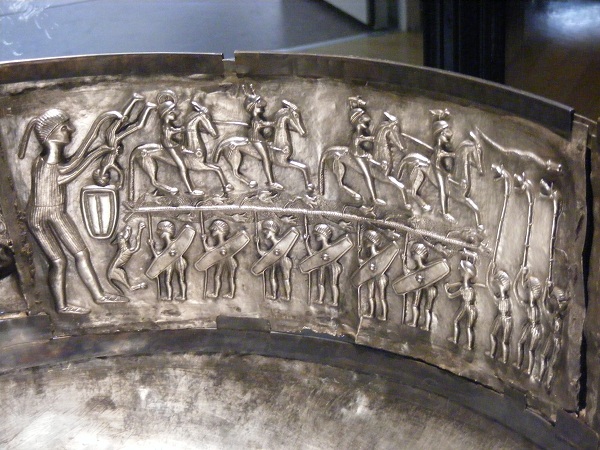
Meanwhile the Norsemen have always used round shields, even back to the bronze age:
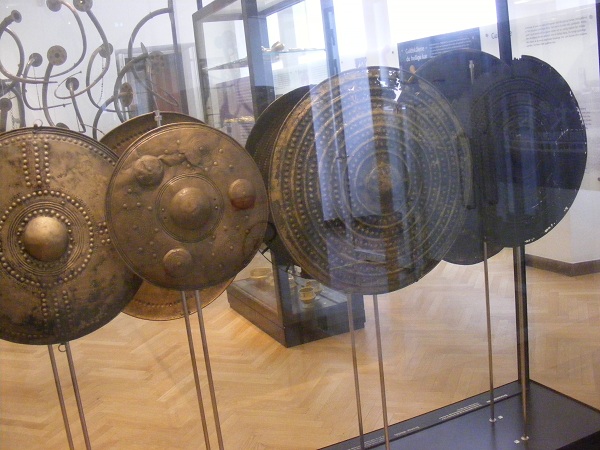
Why do you think it was sacrificed in a bog? An offering to the war god. You can read Tacitus or Caesar's books to see that we sacrificed enemy equipment after victory, even though it was often better than our own.
This is not even to mention that we never built boats like the celts did in Scandinavia, tied with ropes.
Kantz, you're one of the smartest people i've met, and you can run circles around me on Sumeria, but not on Scandinavia. You're wrong here and I like you so I'll actually put in the effort.

The Tanum images depict warfare and cult scenes, with this type of boat and warriors. EXACT same boat as at Hjortspring, same warriors.

You are wrong, they used different weaponry. Hjortspring came with around 80 spears with wooden rectangular shields in the same style the celts used in Britain, along with 10 or so swords for the leaders.

The exact same shields used on the CONFIRMED celtic Gundestrop cauldron:

Meanwhile the Norsemen have always used round shields, even back to the bronze age:

Why do you think it was sacrificed in a bog? An offering to the war god. You can read Tacitus or Caesar's books to see that we sacrificed enemy equipment after victory, even though it was often better than our own.
This is not even to mention that we never built boats like the celts did in Scandinavia, tied with ropes.
a reply to: Ridhya
You'll go around in circles with this because it is commonly known that Germanic shields could be round, rectangular or hexagonal, the Gundestrop cauldron is described as Celtic because it relates to Central European La Tene culture, which is also the heartland of Germanic culture, there was no clear demarcation between the Celtic and Germanic particularly when in close regional proximity, sometimes the same tribe is described in differing accounts as one or the other, in general Celtic is describing those who have migrated to the South and West, of course you will find elements in Danish North West Germanic culture that were common to the Celts.
It was the case though that the further South and West the Celtic tribes expanded then the more they assimilated into the pre-existent cultures in those regions, also in terms of ethnic basis and language, what was seen as Celtic in Britain then for example would be markedly different than the Germanic.
You'll go around in circles with this because it is commonly known that Germanic shields could be round, rectangular or hexagonal, the Gundestrop cauldron is described as Celtic because it relates to Central European La Tene culture, which is also the heartland of Germanic culture, there was no clear demarcation between the Celtic and Germanic particularly when in close regional proximity, sometimes the same tribe is described in differing accounts as one or the other, in general Celtic is describing those who have migrated to the South and West, of course you will find elements in Danish North West Germanic culture that were common to the Celts.
It was the case though that the further South and West the Celtic tribes expanded then the more they assimilated into the pre-existent cultures in those regions, also in terms of ethnic basis and language, what was seen as Celtic in Britain then for example would be markedly different than the Germanic.
edit on Kpm13127vAmerica/ChicagoSaturday2831 by Kantzveldt because: (no reason given)
a reply to: Kantzveldt
I think you're the one going in circles finding excuses why your Swedish royalty connection to Egypt is not flawed. I mean you also wrote that the burial mounds in Uppsala were pyramids... that's just reaching. You seem to have made a conclusion and now rejecting evidence against it. Gundestrop cauldron is south eastern celtic, awaiting the excuse for that now.
I think you're the one going in circles finding excuses why your Swedish royalty connection to Egypt is not flawed. I mean you also wrote that the burial mounds in Uppsala were pyramids... that's just reaching. You seem to have made a conclusion and now rejecting evidence against it. Gundestrop cauldron is south eastern celtic, awaiting the excuse for that now.
a reply to: Kantzveldt
Haha well all that drug use and trance ceremony is sure to lead to spiral motifs everywhere
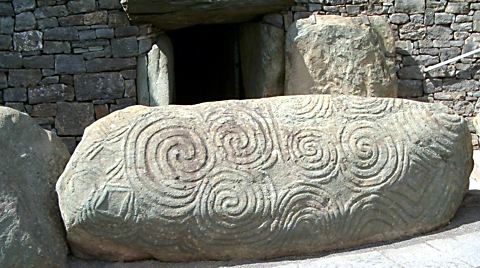
Haha well all that drug use and trance ceremony is sure to lead to spiral motifs everywhere

Also meant to point out...
...this image shows that they were not confirmed as being in the area of Palestine, etc, until 2600 BCE - areas far to the north of Egypt and at a time period when Egyptians had been constructing large ships for well over 600 years.
originally posted by: Kantzveldt
a reply to: Byrd
...this image shows that they were not confirmed as being in the area of Palestine, etc, until 2600 BCE - areas far to the north of Egypt and at a time period when Egyptians had been constructing large ships for well over 600 years.
a reply to: Kantzveldt
Answer.
And here
Before The Pyramids Edited By Emily Teeter.
More ^ detailed than my first link.
The fact is they were much more than just sud busters or cow pokes, they traded in gold and others goodies these folks were no sleepy backwater...hint hence the Name "Nubia"= a place of gold aka Ta-Seti.
There are lots of assumptions involved there, why on Earth would anyone want to be in contact with a bunch of farmers in Sudan even if they did have chiefs and elders in their stratified society, like everybody else in the world, and were's this evidence for Levantine contact...?
Answer.
What was really surprising was the age of the tombs. The cemetery clearly dated from the time of the so-called A-Group - a prehistoric people believed to have dominated lower Nubia from about 3800 to 3100 B.C. Of all the numerous items discovered, the most significant were found in an A-Group grave site, called Cemetery L, which yielded artifacts that were created six to seven generations (approximately 200 years) before the start of the First Dynasty in Egypt, 3150 B.C. All told, more than 1,000 complete and fragmentary painted pots, and over 100 stone vessels.
The range of these and other fragments from the plundered cemetery began to indicate a wealth and complexity that could only be called royal. In addition to huge quantities of native pottery, the tombs were filled with bottles, flasks, bowls, and large storage jars from Egypt - many inscribed with hieroglyphs. There were also vessels from Syria-Palestine of a type that had never been found in Egypt and that may have indicated a direct trade link between Nubia and Asia. These findings included five major groups: 1 - items probably from Sudan 2 - items very similar to a culture previously know as C-Group, which was found in Nubia and in Egypt up to the New Kingdom (2300 - 1500 B.C.) 3 - Egyptian pottery, some of which had early forms of hieroglyphic writing 4 - items from the Levant (Syria and Palestine area) 5 - badly damaged objects of Egyptian and Sudanese origin
alt.history.ancient-egypt.narkive.com...
And here
Before The Pyramids Edited By Emily Teeter.
More ^ detailed than my first link.
The fact is they were much more than just sud busters or cow pokes, they traded in gold and others goodies these folks were no sleepy backwater...hint hence the Name "Nubia"= a place of gold aka Ta-Seti.
edit on 28-1-2017 by Spider879 because: (no reason
given)
the Egyptian boats were made of reeds all bundled together...
the similarity with wooden boats specifically detailed to mimic sea-monsters by the Norse or Swedes or Finns is just a coincidence
the primitive petroglyphs were not sophisticated enough to show the reed boats had no Leviathan Head image as did the Viking longboats
interesting thread idea though
the similarity with wooden boats specifically detailed to mimic sea-monsters by the Norse or Swedes or Finns is just a coincidence
the primitive petroglyphs were not sophisticated enough to show the reed boats had no Leviathan Head image as did the Viking longboats
interesting thread idea though
originally posted by: Spider879
Before The Pyramids Edited By Emily Teeter.
More ^ detailed than my first link.
The fact is they were much more thaT...
Many thanks for the link, Spider. Love Teeter's work. Didn't have that one in my collection.
a reply to: Byrd
U.R welcome, what I found fascinating is that some of the shards and pottery were not merely decorative but tells a story before true writing, ex;
This is pointing to these guys moving into Egypt proper, but yeah lots of reading to be done, I also like her vid lectures, learnt alot that way..
U.R welcome, what I found fascinating is that some of the shards and pottery were not merely decorative but tells a story before true writing, ex;
A great bowl from cemetery L tomb 19 was damaged and with pieces missing. It's composition included animals is interspersed with four balanced vignettes,each with two giraffes flanking a palm tree, superimposed on the palms where the crowns would have been are fallen men, the one to the right attack by a vulture and label with a sigh for upper Egypt.
This is pointing to these guys moving into Egypt proper, but yeah lots of reading to be done, I also like her vid lectures, learnt alot that way..
edit on 29-1-2017 by Spider879 because: (no reason given)
a reply to: Spider879
Those pots from the Levantine probably arrived through increased trade with Lower Egypt through the land connection, they're of the Naqada II period and that's what was starting to happen, you won't find any evidence of trading in gold or even gold artifacts before that period.
a reply to: St Udio
The Royal ships of Abydos were constructed of wood and were very much longships and seem to correlate to what is seen on the petroglyphs.
Royal ships of Abydos
reply to: Byrd
I haven't been looking at this in terms of the progressive extension of tribal regions, but yes by about 2,600 BC there were what should probably be considered Horite groups in Palestine.
What interested me was the possibility of a Hurrian group setting up well outside of their tribal region at early period Uruk in the companion settlement of Bad Tibira and working in conjunction with early Sumerian culture, to ensure the supply of ores needed for that civilization and to provide expertise in metallurgy.
It is the Urukians that have helped establish the ports of Southern Mesopotamia and developed the colony of Dilmun and the copper industries of Magan at the earliest date, the only way a Hurrian group could have been in that region at that period would be in partnership with the Sumerians.
The idea of two different cultures setting up settlements alongside each other and working together for mutual benefit is a little unusual, but that's exactly what happened at Kanes in the Taurus mountains with the Anatolians and Assyrians over several centuries, this could also have happened at Abydos.
Trade colony of Kanes
Those pots from the Levantine probably arrived through increased trade with Lower Egypt through the land connection, they're of the Naqada II period and that's what was starting to happen, you won't find any evidence of trading in gold or even gold artifacts before that period.
a reply to: St Udio
The Royal ships of Abydos were constructed of wood and were very much longships and seem to correlate to what is seen on the petroglyphs.
...the mode of construction is unique among surviving ancient Egyptian boats. About 75 feet in length and seven to ten feet in width at the widest point, these boats are only about two feet deep, with narrowing prows and sterns. The portion of the boat hull excavated revealed thick wooden planks, lashed together by rope fed through mortises.
Royal ships of Abydos
reply to: Byrd
I haven't been looking at this in terms of the progressive extension of tribal regions, but yes by about 2,600 BC there were what should probably be considered Horite groups in Palestine.
What interested me was the possibility of a Hurrian group setting up well outside of their tribal region at early period Uruk in the companion settlement of Bad Tibira and working in conjunction with early Sumerian culture, to ensure the supply of ores needed for that civilization and to provide expertise in metallurgy.
It is the Urukians that have helped establish the ports of Southern Mesopotamia and developed the colony of Dilmun and the copper industries of Magan at the earliest date, the only way a Hurrian group could have been in that region at that period would be in partnership with the Sumerians.
The idea of two different cultures setting up settlements alongside each other and working together for mutual benefit is a little unusual, but that's exactly what happened at Kanes in the Taurus mountains with the Anatolians and Assyrians over several centuries, this could also have happened at Abydos.
Trade colony of Kanes
edit on Kam13128vAmerica/ChicagoSunday2931 by
Kantzveldt because: (no reason given)
a reply to: Kantzveldt
Actually it was direct as the link said..
Those pots from the Levantine probably arrived through increased trade with Lower Egypt through the land connection, they're of the Naqada II period and that's what was starting to happen, you won't find any evidence of trading in gold or even gold artifacts before that period.
Actually it was direct as the link said..
. There were also vessels from Syria-Palestine of a type that had never been found in Egypt and that may have indicated a direct trade link between Nubia and Asia.
a reply to: Spider879
You go from may indicate a direct link to well actually it was, but what is that even supposed to mean, there were several Kingdoms between Nubia and Palestine they hardly had direct relations, and the Ta Seti is known to have come under the influence of Abydos and Naqada II culture so you're wasting your time trying to reverse the relative importance of one to the other.
A group culture
You go from may indicate a direct link to well actually it was, but what is that even supposed to mean, there were several Kingdoms between Nubia and Palestine they hardly had direct relations, and the Ta Seti is known to have come under the influence of Abydos and Naqada II culture so you're wasting your time trying to reverse the relative importance of one to the other.
Excavations at an A-Group cemetery in Qustul yielded an old incense burner, which was adorned with Ancient Egyptian royal iconography.
However, further research established the antecedence of the predynastic Egyptian regalia: The earliest known examples of Egyptian royal iconography, such as, e.g., the representation of the Red Crown on a late Naqada I (c. 3500 BCE) pottery vessel from Abydos or the triumphal scenes in the painting from Hierakonpolis Tomb 100 (c. 3400-3300 BCE) are much older than the Qustul censer. It seems thus that it was the Qustul rulers who adopted symbols of royal authority developed in Egypt and not vice versa
A group culture
a reply to: Kantzveldt
Ok I generally dislike Wiki source concerning history especially when dealing with Africa , open editing and all, but what you are missing is that the elite burials in both Abydos and the city of the Hawk are in fact Ta-Nahasian hence refer back to the black topped wares and remains that plotted closer to Ta-Seti royals than they did to later Egyptians. as they are fact off shoots.
Ok I generally dislike Wiki source concerning history especially when dealing with Africa , open editing and all, but what you are missing is that the elite burials in both Abydos and the city of the Hawk are in fact Ta-Nahasian hence refer back to the black topped wares and remains that plotted closer to Ta-Seti royals than they did to later Egyptians. as they are fact off shoots.
edit on 29-1-2017 by Spider879 because: (no reason
given)
a reply to: Spider879
It's obvious they had been quite closely related being in the same greater region, which should raise the question for you of what accelerated development at Abydos and why was Ta Seti brought under their sphere of influence and later annexed...?
It's obvious they had been quite closely related being in the same greater region, which should raise the question for you of what accelerated development at Abydos and why was Ta Seti brought under their sphere of influence and later annexed...?
a reply to: Kantzveldt
as you keep digging....
you might wan to look into the graphics of the boats the mystery Sea People had attributed to them....
very similar to the Egyptian petroglyphs that seem to mistaken for the Viking Longships that have tall elevated bows & sterns to mimic Sea Monsters/Leviathans of mystery
related: linear A & B tablets of Bilos ? spelling?
as you keep digging....
you might wan to look into the graphics of the boats the mystery Sea People had attributed to them....
very similar to the Egyptian petroglyphs that seem to mistaken for the Viking Longships that have tall elevated bows & sterns to mimic Sea Monsters/Leviathans of mystery
related: linear A & B tablets of Bilos ? spelling?
new topics
-
George Knapp AMA on DI
Area 51 and other Facilities: 4 hours ago -
Not Aliens but a Nazi Occult Inspired and then Science Rendered Design.
Aliens and UFOs: 4 hours ago -
Louisiana Lawmakers Seek to Limit Public Access to Government Records
Political Issues: 6 hours ago -
The Tories may be wiped out after the Election - Serves them Right
Regional Politics: 8 hours ago -
So I saw about 30 UFOs in formation last night.
Aliens and UFOs: 10 hours ago -
Do we live in a simulation similar to The Matrix 1999?
ATS Skunk Works: 10 hours ago -
BREAKING: O’Keefe Media Uncovers who is really running the White House
US Political Madness: 11 hours ago
top topics
-
BREAKING: O’Keefe Media Uncovers who is really running the White House
US Political Madness: 11 hours ago, 23 flags -
George Knapp AMA on DI
Area 51 and other Facilities: 4 hours ago, 19 flags -
Biden--My Uncle Was Eaten By Cannibals
US Political Madness: 12 hours ago, 18 flags -
African "Newcomers" Tell NYC They Don't Like the Free Food or Shelter They've Been Given
Social Issues and Civil Unrest: 17 hours ago, 12 flags -
"We're All Hamas" Heard at Columbia University Protests
Social Issues and Civil Unrest: 12 hours ago, 7 flags -
Louisiana Lawmakers Seek to Limit Public Access to Government Records
Political Issues: 6 hours ago, 7 flags -
Russian intelligence officer: explosions at defense factories in the USA and Wales may be sabotage
Weaponry: 16 hours ago, 6 flags -
So I saw about 30 UFOs in formation last night.
Aliens and UFOs: 10 hours ago, 5 flags -
The Tories may be wiped out after the Election - Serves them Right
Regional Politics: 8 hours ago, 3 flags -
Not Aliens but a Nazi Occult Inspired and then Science Rendered Design.
Aliens and UFOs: 4 hours ago, 3 flags
active topics
-
Biden--My Uncle Was Eaten By Cannibals
US Political Madness • 44 • : JadedGhost -
George Knapp AMA on DI
Area 51 and other Facilities • 14 • : Brotherman -
Candidate TRUMP Now Has Crazy Judge JUAN MERCHAN After Him - The Stormy Daniels Hush-Money Case.
Political Conspiracies • 383 • : xuenchen -
OUT OF THE BLUE Chilling moment pulsating blue cigar-shaped UFO is filmed hovering over PHX AZ
Aliens and UFOs • 42 • : Ophiuchus1 -
-@TH3WH17ERABB17- -Q- ---TIME TO SHOW THE WORLD--- -Part- --44--
Dissecting Disinformation • 531 • : cherokeetroy -
So I saw about 30 UFOs in formation last night.
Aliens and UFOs • 20 • : Halfswede -
MULTIPLE SKYMASTER MESSAGES GOING OUT
World War Three • 33 • : Halfswede -
Not Aliens but a Nazi Occult Inspired and then Science Rendered Design.
Aliens and UFOs • 7 • : JonnyC555 -
Mood Music Part VI
Music • 3057 • : BatCaveJoe -
The Tories may be wiped out after the Election - Serves them Right
Regional Politics • 19 • : alwaysbeenhere2

